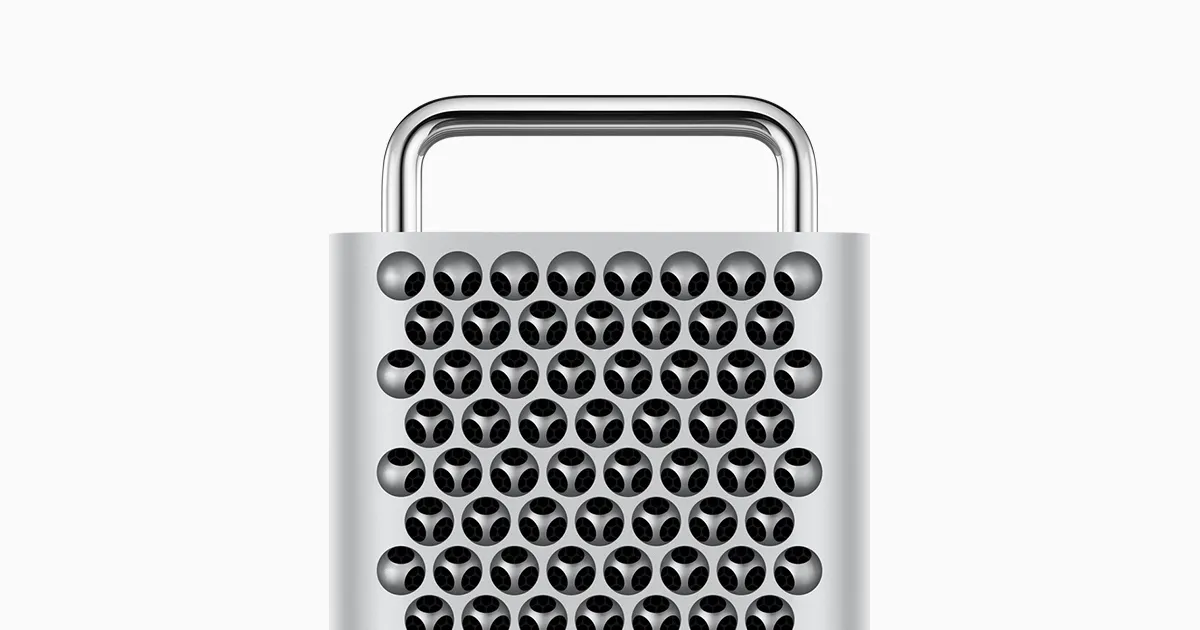After a considerable wait, Apple has finally unveiled the Apple Silicon version of the Mac Pro at WWDC 2023. This release took longer compared to other Mac devices, making it the last one to transition to Apple Silicon.
To put it plainly, the Apple Silicon Mac Pro is a major letdown. After the disappointment of the 2013 Mac Pro and the infamous Apple roundtable where they promised to revive the line, expectations were high that Apple would take the Mac Pro seriously this time. In 2019, Apple seemed to have delivered on those expectations with the announcement of the Intel-based Mac Pro. It was evident that Apple had invested significant effort to create a modular, powerful, and an expandable machine that catered to the needs of professionals. This Mac Pro was robust and future-proof, representing a renewed focus on serving the Pro market, which had been neglected for a considerable period by Apple.
However, just a few months after the Mac Pro started shipping to customers, Apple made a surprising announcement about Apple Silicon. While on the surface, it may have seemed like the Mac Pro was once again left behind without a clear roadmap, the initial release of Apple Silicon mainly focused on customer-oriented chips that excelled in casual use, rather than providing the power required for professional machines. Therefore, it wasn't a major cause for concern initially. Nevertheless, it did not align with Apple's typical approach of releasing an entirely new Mac Pro specifically designed for Intel CPUs and AMD GPUs, only to introduce an entirely new silicon for Mac just six months later, rendering the new Mac Pro seemingly outdated.

The 2023 Mac Pro is equipped with the M2 Ultra chip, the same chip powering the 2023 Mac Studio. This leads to the question of what sets the Mac Pro apart. Throughout its history, the Mac Pro has been recognised for its expandable slots and superior thermal design. The 2023 Mac Pro follows suit by reusing the chassis design of the 2019 Mac Pro, resulting in improved thermal efficiency compared to the Mac Studio. However, the difference is minimal enough that it can be easily overlooked. The most notable distinction between the Mac Pro and the Mac Studio lies in the presence of six PCIe expandable slots, which is a significant advantage for those in need of expandable card slots to support their specific workflow.
However, the perplexing aspect is that these PCIe slots, which traditionally allowed users to expand or upgrade discrete GPUs, no longer possess this capability in the 2023 Mac Pro. This omission is perhaps the most significant drawback of the machine. While there are numerous expandable card options like sound cards, networking cards, and storage cards that can be utilized with these PCIe slots, the absence of support for external GPUs with the Apple Silicon Mac Pro is a major disappointment. This decision renders the product significantly less useful for a substantial segment of users who would have otherwise chosen the Mac Pro over the Mac Studio, had this capability not been missing.
The reason for this limitation is rooted in the design differences between Apple Silicon and Intel/AMD CPUs. Apple Silicon functions as a System on a Chip (SoC) that incorporates integrated RAM and GPUs. These integrated GPUs are optimised to utilize the unified memory architecture, and Apple has not pursued the path of enabling compatibility between external GPUs and these integrated GPUs. While there are certain scenarios where having an integrated GPU with a substantial amount of unified memory proves advantageous over an external GPU, in many cases, such as video production and machine learning, more powerful external GPUs are preferable. Also, the GPU integrated into the M2 Ultra is not on par with the top-of-the-line GPUs offered by Nvidia, making external GPUs with greater processing capabilities more appealing for resource-intensive tasks.

The exclusion of support for external GPUs with Apple Silicon greatly diminishes the usefulness of the Mac Pro for a substantial segment of users, who may now prefer to opt for the Mac Studio instead. This decision effectively places the Mac Pro in a niche category, where consumers seek an Apple Silicon Mac with expandable slots, but not specifically for GPUs. It raises the question of whether Apple truly needed to create this machine for such a limited audience.
Not only the CPU, the 2023 Mac Pro does not offer the same level of RAM support as its predecessor, the 2019 Mac Pro. While the 2019 Mac Pro was capable of supporting up to 1.5 TB of RAM, the 2023 Mac Pro is limited to a maximum of 192 GB. Although the 2023 Mac Pro benefits from the advantages of unified memory, which brings significant improvements to various other aspects of the experience, it can be seen as a downgrade for users who require the extensive amounts of memory that were possible with the 2019 Mac Pro.
Lastly, the price. The 2023 Mac Pro, lacking a top-of-the-line CPU, GPU, and offering a lower RAM capacity, comes with a base price that is a thousand dollars higher than its 2019 counterpart. In my opinion, this price increase seems unjustified.
When the M1 MacBook Air was introduced, the switch to Apple Silicon had a profound impact on its performance, battery life, and overall user experience, despite minimal changes to the MacBook Air itself. However, in the case of the 2023 Mac Pro, Apple attempted a similar approach by retaining the same design while replacing the internals with Apple Silicon. Unfortunately, this time, it appears that the transition has not brought about any significant difference in the experience compared to what a Mac Studio can already provide.










